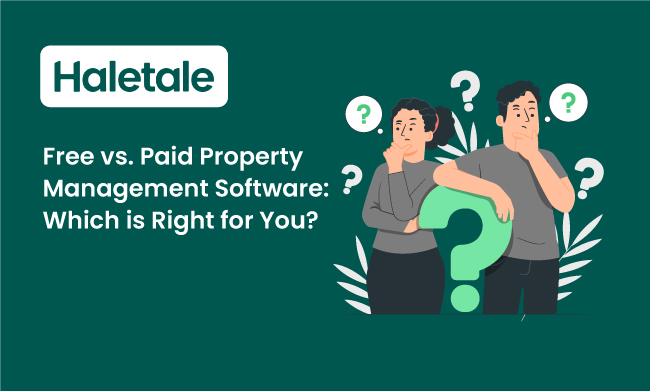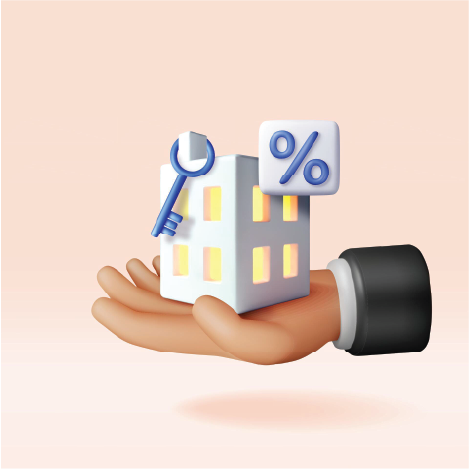Introduction
When it comes to managing rental properties, one of the biggest decisions landlords face is whether to use free or paid property management software. Both options have their pros and cons, and the choice you make can significantly affect how smoothly you run your operations. So, how do you decide which one is right for you?
Key Differences Between Free and Paid Software
Let’s break down the main differences:
Limitations of Free Versions
Free software often comes with some restrictions:
Property Limits: Many free options limit the number of properties you can manage. This is fine if you only have a couple of units, but it can become a hassle if you plan to expand your portfolio.
Fewer Integrations: Free software may not integrate well with other tools you use, like accounting software or marketing platforms. This can make managing your business more complicated.
Basic Features: While free software typically covers essential functions like rent collection and tenant screening, it often lacks advanced features such as detailed analytics or customizable reports.
Advanced Features in Paid Options
Paid property management software usually offers a more robust set of features:
Comprehensive Reporting: Paid software often includes advanced reporting tools that help you analyze your financial data in detail. This can be invaluable for making informed decisions.
Premium Support: With paid options, you usually get better customer service. This can be crucial if you run into technical issues or have questions about using the software.
Customization: Many paid solutions allow for more customization, so you can tailor the platform to your specific needs.
When to Choose Free Property Management Software
Free software can be a great option in certain situations:
Managing a Few Properties
If you’re just managing one or two rental units, free software can provide the basic tools you need without any cost. Features like rent collection and tenant applications are often sufficient for small-scale operations.
On a Tight Budget
For new landlords or those with limited funds, free software lets you get started without making a financial commitment. This allows you to focus on building your portfolio before investing in more advanced tools.
Trying Before Buying
If you’re unsure about which software to use, starting with free options allows you to test different platforms without any financial risk. This way, you can see what features are essential for your business before making a monetary investment.
When to Upgrade to Paid Property Management Software
There are clear signs that it might be time to switch to paid software:
Larger Portfolios
If you find yourself managing several properties, the limitations of free software can become a significant drawback. Paid options can help you stay organized and efficient as your portfolio grows.
Need for Extra Features
If you start to notice that you need functionalities that free software doesn’t provide—like advanced reporting or CRM tools—it may be time to invest in a paid solution. These features can greatly enhance your ability to manage your properties effectively.
Enhanced Efficiency and Productivity
As your business grows, so do your responsibilities. Paid software can automate many tasks, leading to increased efficiency. This frees up your time to focus on more strategic aspects of your business.
Top Free and Paid Software Options
Here’s a quick look at some popular free and paid property management platforms:
Free Options
-
- TenantCloud
What It Offers: Basic tools for rent collection, tenant screening, and maintenance tracking. Easy to use for beginners.
Limitations: Only allows a limited number of properties on the free plan.
- TenantCloud
- TurboTenant
What It Offers: Free tenant applications, online rent payments, and marketing tools to help attract new tenants.
Limitations: Some advanced features are only available in paid plans.
Paid Options
-
- Haletale
What It Offers: Tailored solutions focusing on compliance and efficient management for property managers.
Pricing: Competitive plans to fit various needs.
- Haletale
-
- Buildium
What It Offers: Comprehensive tools for property management, including advanced reporting and tenant communication.
Pricing: Tiered pricing based on the number of units you manage.
- Buildium
-
- AppFolio
What It Offers: Comprehensive tools for property management, including advanced reporting and tenant communication.
Pricing: Tiered pricing based on the number of units you manage.
- AppFolio
- Haletale
What It Offers:Tailored solutions focusing on compliance and efficient management for property managers.
Pricing: Competitive plans to fit various needs.
Making the Decision
Choosing between free and paid property management software ultimately depends on your specific needs as a landlord. If you’re just starting out or only managing a few properties, free options might be perfect for you. However, if you have a larger portfolio or need advanced features, investing in paid software could be well worth it.
Take some time to evaluate what you truly need in your property management process. Consider factors like the number of properties you manage, your budget, and any specific features that would streamline your operations. By understanding your own requirements, you’ll be in a better position to choose the software that best fits your needs.
Follow us on:- haletale
Conclusion
advanced tools and support that can help you manage larger portfolios more effectively.Ready to find the right property management software for you? Take a moment to assess your needs and explore options like Haletale to help you manage your properties smoothly!For further insights, visit Haletale’s How Property Management Software Drives Rental Success Globally












